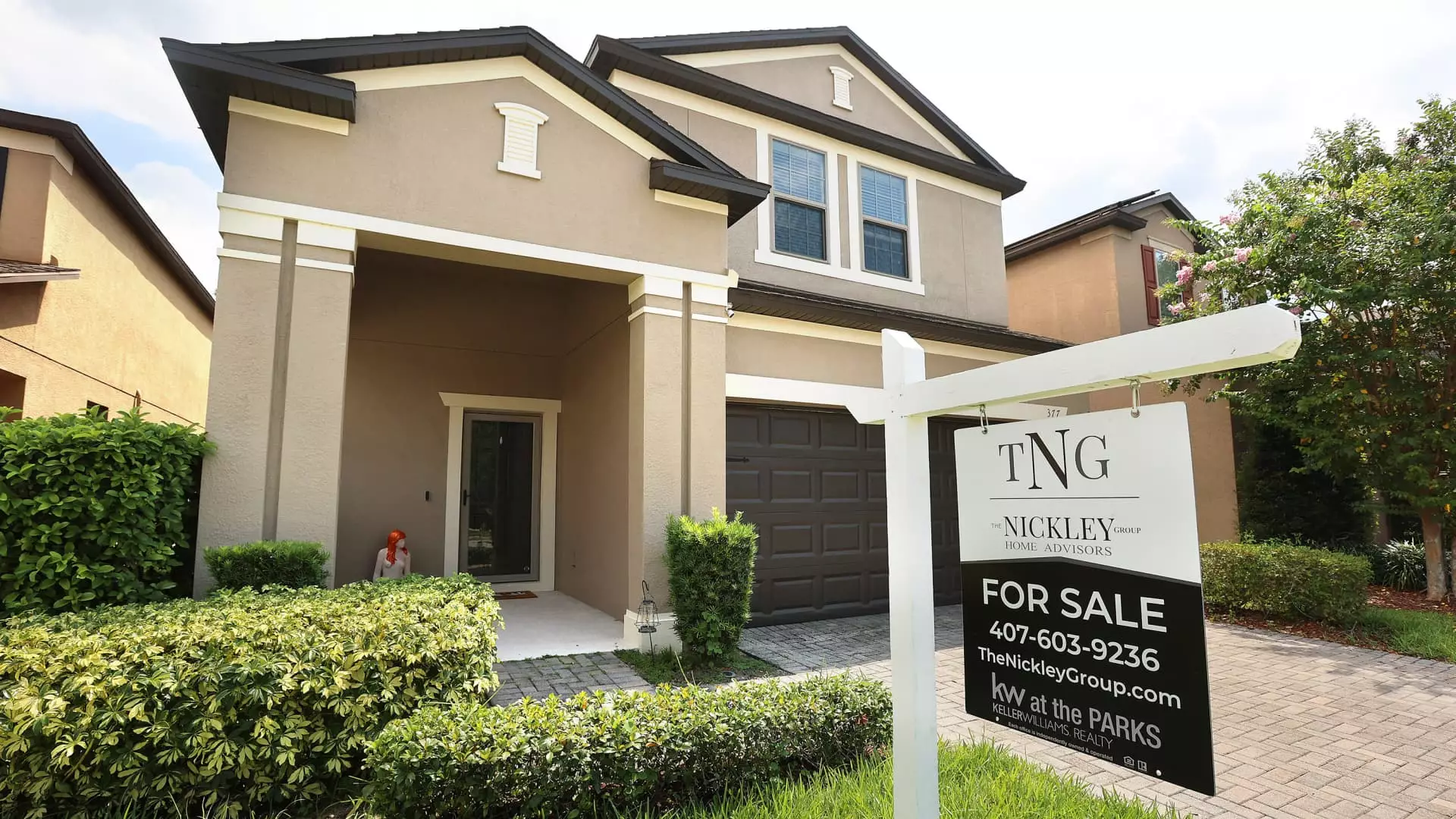In a noteworthy development within the housing market, mortgage interest rates recently experienced a decline, reaching their lowest point in two months. Specifically, the average interest rate for 30-year fixed-rate mortgages with conforming loan balances dropped to 6.88%, a slight decrease from the previous week’s rate of 6.93%. Despite this positive shift in rates, the response from potential borrowers has been surprisingly tepid, as reflected in a 1.2% decrease in overall mortgage application volume according to the latest report from the Mortgage Bankers Association (MBA). This paradox raises questions about the factors influencing consumer behavior in the current economic climate.
Economic Context and Consumer Sentiment
The drop in mortgage rates coincides with softer consumer spending data that points to an underlying cautiousness among consumers about the economy and job market. Joel Kan, the vice president and deputy chief economist at MBA, highlights that the decline in Treasury yields, driven by these economic indicators, has effectively reduced mortgage rates. However, despite lower borrowing costs, the mortgage application activity has not surged as one might expect. In fact, the applications to refinance home loans, which had climbed significantly in January and early February, saw a 4% reduction over the past week, albeit remaining 45% higher compared to the same week in the prior year.
Interestingly, although refinancing activity has generally diminished, there appears to be a specific uptick in FHA refinance applications, which increased by 8% in the same timeframe. This segment is crucial as it indicates that while broader refinancing may be struggling, certain niches within the market remain active. On the other hand, applications for purchasing a home remained stagnant week-over-week but were still 3% higher compared to the previous year. This suggests that while the interest rates are more favorable, other factors are stifling a robust response from homebuyers.
The dynamics of the resale housing market also play a significant role in shaping demand. With more homes sitting on the market longer, there is an increase in available options for buyers. However, inventory levels remain historically low, leading to a situation where home prices are not retreating significantly despite a larger supply. This paradox presents a complex landscape for potential buyers, as they face the dual pressures of rising prices and fluctuating mortgage rates.
Outlook on Mortgage Trends
Looking ahead, the beginning of the week has shown a slight continuation of the declining mortgage rates trend, as reported by Mortgage News Daily. An average reduction of 22 basis points over the past several business days reflects a broader trend where bonds are gaining appeal. Chief Operating Officer Matthew Graham emphasizes that as demand for bonds increases, mortgage rates are likely to fall, creating an ever-evolving landscape for borrowers. Thus, while current interest rates may present a window of opportunity for some, the lingering economic uncertainties and historical low inventory may still keep many potential buyers on the sidelines. As the situation develops, it remains critical for stakeholders in the housing market to stay informed and adaptable to the rapid changes in market conditions and consumer sentiment.


Leave a Reply